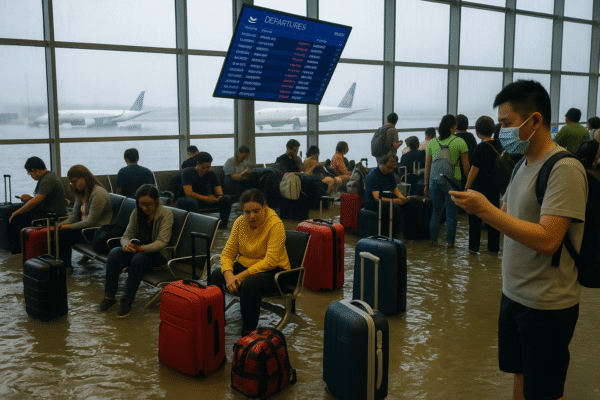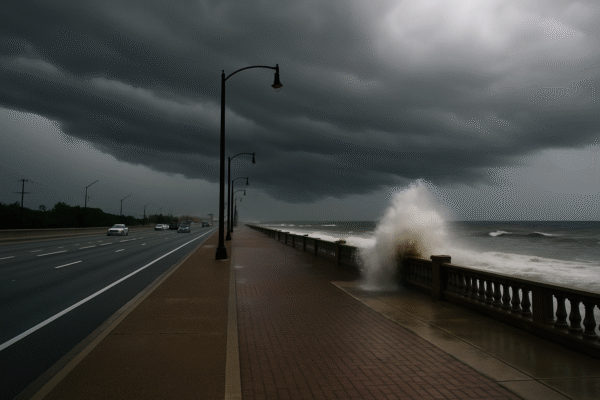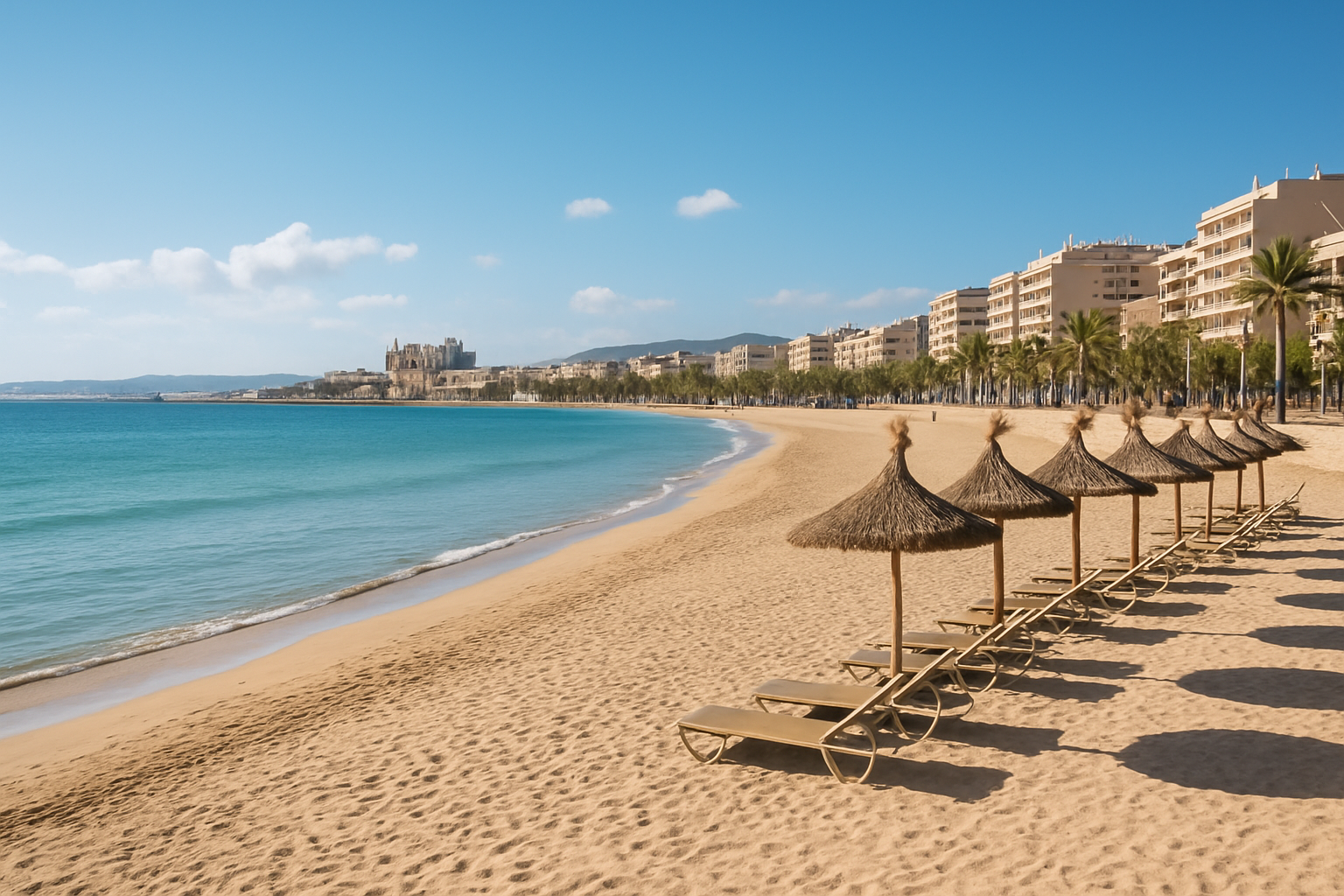Palma de Mallorca, Spain | June 19, 2025 –
The Balearic Islands are on the brink of a major tourism shift as local authorities take firm action to counter the rising impact of over-tourism and environmental degradation. Starting in 2026, the capital city of Palma, on the island of Majorca, will implement a drastic reduction of beach sunbeds—cutting approximately 1,700 units across popular beaches. The move is a response to resident discontent, ecological stress, and the challenges of accommodating record-breaking tourist numbers, particularly from the United Kingdom.
The islands—Majorca, Ibiza, Menorca, and Formentera—have historically been magnets for British tourists. However, rising concerns from locals about overcrowding, increasing rental prices, and shrinking public beach space have led officials to rethink how tourism should evolve in this Mediterranean paradise.
A Tourism Boom with Mounting Consequences
In 2024 alone, Spain’s Balearic Islands welcomed 15.3 million international tourists, marking a 6.15% increase from the year prior. Majorca (or Mallorca), with its vibrant resort towns such as Magaluf, Alcúdia, and Palma, remains the top destination for British holidaymakers. Yet, what has been a boon for the economy is now sparking protests and a visible backlash from residents who feel increasingly sidelined by mass tourism.
Rising rental costs, housing shortages due to short-term holiday lets, and environmental strain have turned public sentiment sour. Slogans like “Tourists Go Home” have appeared across Palma, while water pistol protests and demonstrations are becoming more frequent. The root cause? A feeling of displacement and commercialization that erodes local quality of life and identity.
A New Direction for Palma’s Beaches
In a landmark decision, Palma’s city council announced it will remove around 1,700 sunbeds from its beaches by 2026 as part of a broader plan to reclaim public space and prioritize sustainable tourism. The city cited two primary concerns: the rapid loss of beach surface due to rising sea levels and an uptick in local complaints over shrinking access to public shores.
A spokesperson from the Balearic Department of Home Affairs explained, “There has been a loss of sand on the beaches, and we couldn’t maintain the same number of sunbeds and umbrellas. This has coincided with complaints from residents who feel they have less space.” The aim is not to ban sunbathing altogether but to reduce the clutter of mass tourism and return the coastlines to shared community use.
Beaches impacted by the policy include Platja de Palma—where sunbed numbers will drop from 6,000 to 4,436—as well as Cala Major and Cala Estància, which will see reductions of 50 and 18 sunbeds respectively.
Sea Level Rise and Coastal Erosion
Environmental degradation is a growing concern across Mediterranean coastal regions. Rising sea levels and stronger storm surges are steadily eroding Balearic beaches, making it physically impossible to maintain the current infrastructure of lounge chairs and umbrellas. This, paired with seasonal overcrowding, creates tension not only for residents but also for the ecosystem itself.
Reducing beach infrastructure is part of a larger effort to address the climate crisis while signaling to tourists that the islands are serious about environmental preservation. Palma’s leadership hopes this decision will shift the image of Majorca from a party-centric destination to one that values sustainability and community integrity.
British Tourists: Still Welcome, But With Awareness
UK travelers, who make up a sizable share of the Balearic Islands’ visitors, are advised to plan ahead and embrace this evolving tourism experience. While reduced access to beach sunbeds may change the traditional holiday model, the islands still offer a wealth of experiences—from hiking the Tramuntana mountains to exploring Palma’s Gothic cathedral or savoring local cuisine in sleepy inland villages like Sineu.
The removal of sunbeds is not an anti-tourist measure but rather a recalibration of public use and sustainable growth. It’s a call to both tourists and operators to reassess what responsible travel looks like in 2025 and beyond.
The Future of Sustainable Tourism in Spain
Palma’s sunbed policy is likely a harbinger of broader transformations across Spain’s tourism sector. Similar concerns are mounting in Barcelona, the Canary Islands, and parts of mainland Andalusia. The conversation around tourism is shifting from volume to value—focusing less on quantity and more on long-term impact.
The Spanish government has also expressed interest in introducing a nationwide strategy for managing high-traffic tourist zones, potentially including stricter zoning rules, increased taxes on short-term rentals, and public awareness campaigns promoting sustainable travel behaviors.
Moreover, the unified message from tourism boards across Spain is becoming clearer: while visitors are welcome, preserving local life and ecological balance takes precedence.
What Responsible Travelers Can Do
For tourists who still wish to enjoy the Balearic Islands without contributing to over-tourism, several steps can make a meaningful difference:
- Travel Off-Season: Visiting in spring or early autumn can reduce crowding and provide a more relaxed experience.
- Stay Local: Choose family-run hotels, eco-lodges, or licensed homestays over short-term vacation rentals that displace residents.
- Support Local Businesses: Dine in local restaurants, join community-led tours, and avoid chain operations that extract wealth from the region.
- Respect Local Spaces: Use public transport, avoid littering beaches, and be mindful of cultural traditions and community events.
Conclusion: A Turning Point for the Balearics
The decision to cut down sunbeds is not just a reactionary measure—it’s a strategic shift signaling the Balearic Islands’ move toward sustainable tourism. As one of Europe’s most iconic coastal destinations, Majorca and its sister islands are now setting the tone for what post-pandemic travel might look like: eco-conscious, locally sensitive, and future-ready.
For travelers willing to adapt, the new Balearics promise a more authentic and fulfilling experience. And for locals, it may be the first real step in regaining control over their beloved homeland’s identity and future.
For more travel news like this, keep reading Global Travel Wire

















